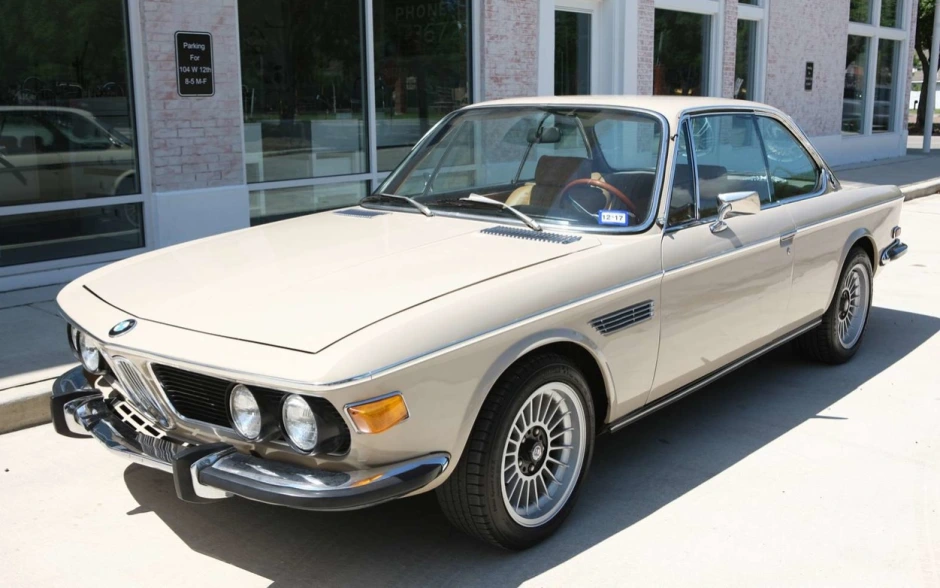
The BMW 2800 CS, belonging to the celebrated E9 series, is a two-door coupé produced by the esteemed German car manufacturer, BMW. The model stands out as a significant milestone in BMW’s rich history, introducing a new era of performance-oriented, luxury coupés, solidifying BMW’s reputation in this niche.
Initial Development and Design
The 2800 CS was launched in 1968, following the BMW 2000 CS, as part of BMW’s ‘Neue Klasse’ (New Class) line of coupés. The car was conceptualized and designed by Wilhelm Hofmeister, a renowned designer known for crafting the iconic “Hofmeister kink” — a distinctive, forward-bending edge at the C-pillar of the car. This design feature quickly became a stylistic signature for BMW, carrying forward into many subsequent models.
The BMW 2800 CS was conceived as a high-performance, luxury coupé aimed at penetrating a market segment that demanded both power and opulence. It featured a streamlined silhouette with a long hood, sleek roofline, and graceful stance that was both sporty and elegant, exuding an air of understated luxury.
Engine and Performance
Under the hood, the 2800 CS was powered by the M30B28V engine, which was BMW’s first foray into producing straight-six engines. With a capacity of 2.8 liters, this engine, the largest in BMW’s portfolio at the time, churned out a commendable 170 horsepower (125 kW). The power output propelled the vehicle to a top speed of around 200 km/h (124 mph), establishing it as a formidable contender in the performance category.
The 2800 CS was initially available with a four-speed manual transmission, but BMW added a three-speed automatic variant to the lineup in 1971, catering to the needs of a broader customer base.
Subsequent Model Updates
In 1971, a few years after the launch of the 2800 CS, BMW introduced the 3.0 CS and 3.0 CSi models, enhancing the engine capacity to 3.0 liters for improved performance. By 1972, BMW decided to phase out the 2.8-liter engine that powered the 2800 CS, marking the end of this model. However, the 2800 CS’s importance cannot be overstated as it laid the robust foundation for these successors. Among them, the 3.0 CSi gained massive popularity and is now regarded as a classic.
The E9 series’ legacy, including the 2800 CS, was carried forward by the E24 6 Series introduced in 1976. During the approximately eight-year production run of the 2800 CS and its successors, BMW produced nearly 30,000 units.
Motorsport Success and Performance Legacy
The E9 series, and by extension, the 2800 CS, made considerable waves in the motorsport world. BMW developed the 3.0 CSL (a lightweight rendition of the 3.0 CS) to participate in the European Touring Car Championship, where it achieved remarkable success. These victories significantly bolstered BMW’s image as a manufacturer of sporty, high-performance vehicles.
Lasting Impact and Legacy
In the present day, the BMW 2800 CS, along with its E9 series compatriots, are coveted collectibles for car enthusiasts and collectors worldwide. They embody a critical phase in BMW’s evolution when the automaker successfully carved its niche in crafting luxury coupés with a sporty twist. This reputation endures to this day.
The 2800 CS, along with the entire E9 series, played a critical role in shaping BMW’s current identity as a maker of luxury vehicles with exceptional performance. They showcased BMW’s innovative engineering capabilities, ranging from the development of their first straight-six engine to the distinctive design aesthetic brought by Hofmeister. These elements persist in BMW’s vehicles today. The legacy of the 2800 CS is vividly alive in the DNA of BMW’s modern coupés, perpetuating its influence across decades.
